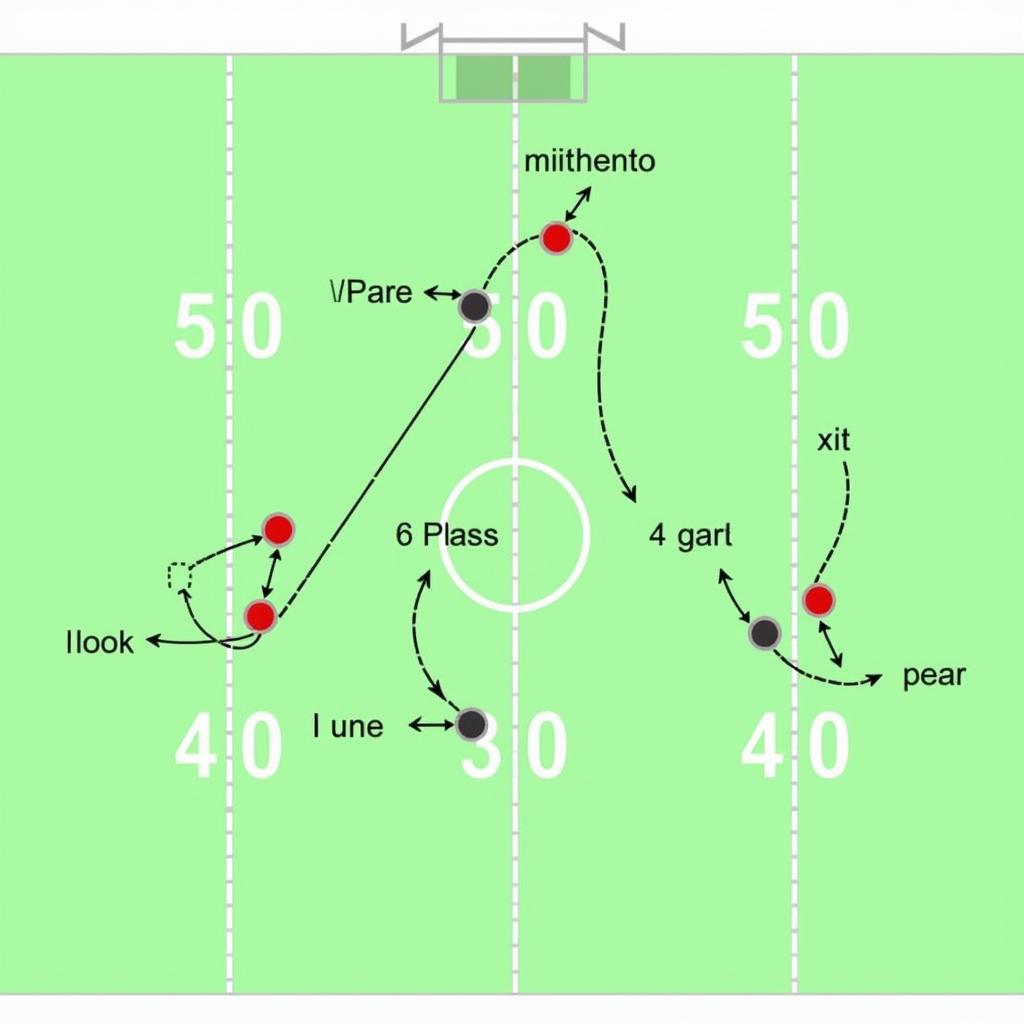The Hook Curl Zone is a crucial area on the football field, demanding precision and understanding from both offensive and defensive players. This guide delves into the intricacies of this zone, exploring its strategic significance and providing practical tips for dominating it.
Understanding the Hook Curl Zone: Where Skill Meets Strategy
The hook curl zone, typically situated between 5-10 yards from the line of scrimmage, is where receivers often execute hook and curl routes. This area presents a challenging chess match between quarterbacks, receivers, and defenders. It’s a battleground where timing, route running, and defensive awareness collide. Mastering this zone is key to unlocking offensive potential and stifling opposing attacks. Why is this zone so important? It’s an area where quick passes can be completed for decent yardage, especially against zone defenses. Offensive coordinators often exploit this area to keep the chains moving on critical downs.
What makes a hook curl route effective? Precision in the receiver’s break, the quarterback’s timing, and the ability to read the defense are all crucial elements. Defenders need to be quick to react and understand offensive tendencies to disrupt plays in this zone.
 Diagram of the Hook Curl Zone on a Football Field
Diagram of the Hook Curl Zone on a Football Field
Offensive Strategies for the Hook Curl Zone
For quarterbacks, throwing to the hook curl zone requires quick decision-making and accurate ball placement. Receivers must be adept at creating separation from defenders and securing the catch in tight coverage. Here are some key offensive strategies:
- Timing is Everything: The quarterback and receiver must be perfectly synchronized to exploit this zone. A delayed throw can result in an interception, while a rushed throw can lead to an incompletion.
- Crisp Route Running: Receivers need to execute sharp, precise breaks to create separation from defenders. A rounded-off route can allow the defender to close the gap and make a play on the ball.
- Reading the Defense: Quarterbacks must be able to diagnose the defense and anticipate how they will react to the play. Recognizing coverages and identifying vulnerabilities in the zone is essential for success.
Defensive Strategies in the Hook Curl Zone
Defenders tasked with covering the hook curl zone must possess excellent reaction time and anticipation. They need to be able to read the quarterback’s eyes, disrupt the receiver’s route, and make a play on the ball. Here are some crucial defensive strategies:
- Zone Awareness: Understanding zone responsibilities and maintaining proper depth and leverage are critical. Defenders must be able to quickly react to routes entering their zone.
- Disrupting the Timing: Jamming the receiver at the line of scrimmage can disrupt the timing of the route and give the defender an advantage. Tight coverage can force the quarterback to look elsewhere.
- Reading the Quarterback’s Eyes: Anticipating the throw by reading the quarterback’s progressions can allow the defender to jump the route and make an interception.
Hook Curl Zone vs. 3 4 Defense Cover 3
How does the hook curl zone interact with specific defensive schemes like the 3 4 defense cover 3? Understanding this relationship is critical for both offensive and defensive players. In a Cover 3 scheme, the hook curl zone is often the responsibility of the underneath zone defenders. Offensive coordinators might target this zone with quick passes to exploit soft spots in the coverage. Learn more about the 3 4 defense cover 3.
Conclusion: Owning the Hook Curl Zone
The hook curl zone is a dynamic and strategically vital area on the football field. Mastering this zone requires a combination of skill, strategy, and execution. By understanding the offensive and defensive principles outlined in this guide, players can elevate their game and gain a competitive edge in this crucial area of the field. Whether you’re a quarterback, receiver, or defender, understanding the nuances of the hook curl zone is essential for success.
FAQ:
- What is the typical depth of the hook curl zone? Typically between 5-10 yards from the line of scrimmage.
- What routes are commonly run in this zone? Hook and curl routes.
- Why is timing so important in the hook curl zone? Because delays can lead to interceptions and rushed throws can be inaccurate.
- How can defenders disrupt plays in this zone? By jamming receivers, maintaining tight coverage, and reading the quarterback’s eyes.
- What offensive strategies are effective in the hook curl zone? Precise route running, accurate throws, and reading the defense.
- How does the hook curl zone relate to zone defenses? It’s often targeted to exploit soft spots in coverage.
- What are some tips for mastering the hook curl zone? Focus on timing, route precision, and reading the opponent’s movements.
Need assistance? Contact us 24/7: Phone: 0902476650, Email: [email protected] or visit us at 139 Đ. Võ Văn Kiệt, Hoà Long, Bà Rịa, Bà Rịa – Vũng Tàu, Việt Nam.





